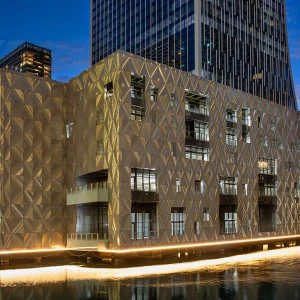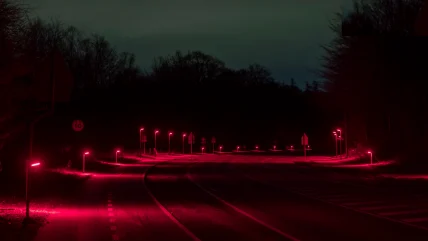
If there is one colour in lighting that most people tiptoe round it’s red. The obvious connotation with the seamier side of life might be one reason (the semiotics of colour), especially in hotels. But it is also a bold, brash, in-your-face colour that in lighting terms needs judicious handling outside the nightclub. We can live with the blue tones at the other end of the spectrum, even in a working environment, but red can be, well, a bit much.
But research in a number of areas has revealed hidden depths to red light. For one thing, it is thought to have less impact on nocturnal wildlife than white light. A radical project by Light Bureau, winner of a Build Back Better Award in 2022, involved illuminating a 700m-stretch of major road on the outskirts of Copenhagen entirely in red light. The area is home to several species of bats, and the scheme was developed following consultations with biologists and bat experts. In the UK, Worcestershire County Council also has a similar, smaller road lighting scheme.
And red light has been shown to play a significant role in human health and well-being. According to leading circadian clock specialist Dr Martin Moore-Ede there may not be enough red in our lives, including infrared and near infrared light. ‘We live in an infrared-deprived world,’ says Moore-Ede, who as a Harvard professor led the team that located the suprachiasmatic nucleus, the biological clock in the human brain.
He cites the growing use of IR-blocking E-Glass in buildings and LED sources that have little deep red and no infrared, unlike traditional sources such as wood fires, candles and, more recently, incandescent lamps. ‘LED lights with added near-infrared in the 800-1,000nm range were shown to have a calming and relaxing effect compared to LED lights without added infrared,’ says Moore-Ede.
Research has thrown up numerous and diverse areas where deep red and infrared light have been shown to have beneficial medical effects. Near infrared light, for example, has been found to reverse the deteriorations of mitochondrial function that result from ageing and disease.
A study on mice at the University of Pittsburgh published earlier this year found that exposure to 617nm red light could reduce the size of blood clots with implications for treating and preventing heart attacks and strokes. Another study has found that irradiating human skin with 670nm red light for 15 minutes can beneficially affect glucose tolerance.
But red light can also play a powerful aesthetic and atmospheric role simply because of its associations: it is the colour of fire and fierceness; it is stimulating and invigorating.
There are different ways of using red, and warm temperature, light to powerful effect.
Designers of new offices for a Canadian ad agency, for example, have used it as an accent, a foil to a muted colour scheme, a simple linear detail that implies energy and creativity.
YI.ng Lighting Design Consultants have applied it along with amber light to evoke the red heat of industry at the Matsu Beigan Power Plant in Taiwan. It is reminiscent of the way Speirs Major Lighting Architecture used it many years ago in pioneering schemes for Magna Science Adventure Centre in Rotherham, and Zollverein Kokerei in the Ruhr, Germany.
For one of SMLA’s latest schemes, it is the structure itself that is red rather than the lighting, but for both aesthetic and environmental reasons the white light is tuned to the red, long-wavelength end of the spectrum.
MATSU BEIGAN POWER PLANT, TAIWAN
YI.NG LIGHTING DESIGN CONSULTANTS
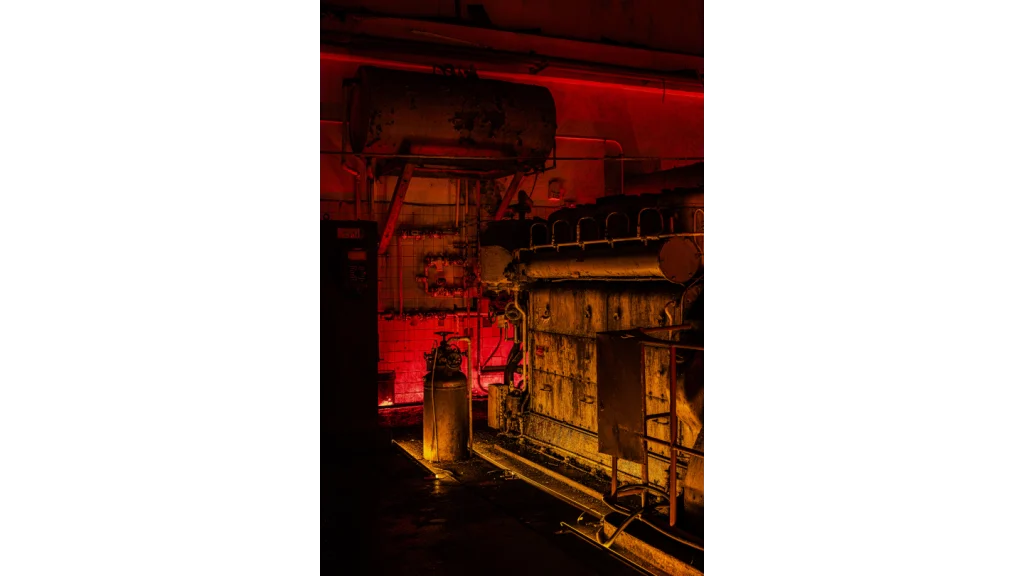
Winner of an IALD Merit Award, the Cold War-era thermal power plant was a militarily restricted area until the 2023 Matsu Biennial event revealed the underground space to the public for the first time in 50 years.
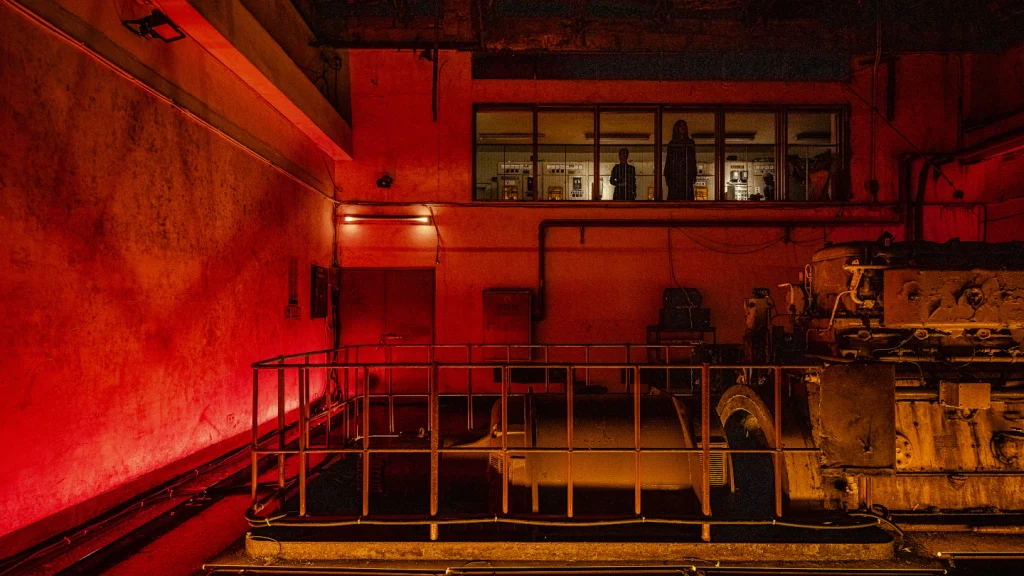
A wash of red light on the walls animates the gritty, industrial space and suggests the working process. Accent lighting highlights the instrumentation, while cabinets are internally illuminated with amber light to replicate the machines’ operation. Once the source of the entire island’s electricity, the plant now serves as an abstract design of energy conversion.
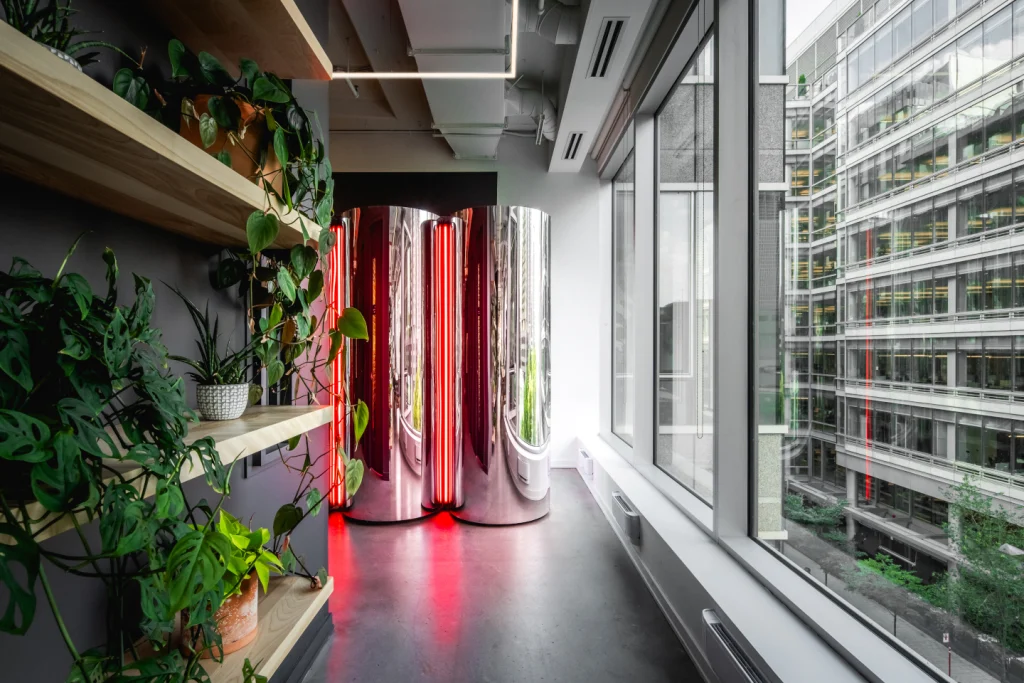
PLUS COMPANY CAMPUS AND COSSETTE OFFICES, MONTREAL
LIGHTING: LAAB ARCHITECTURE
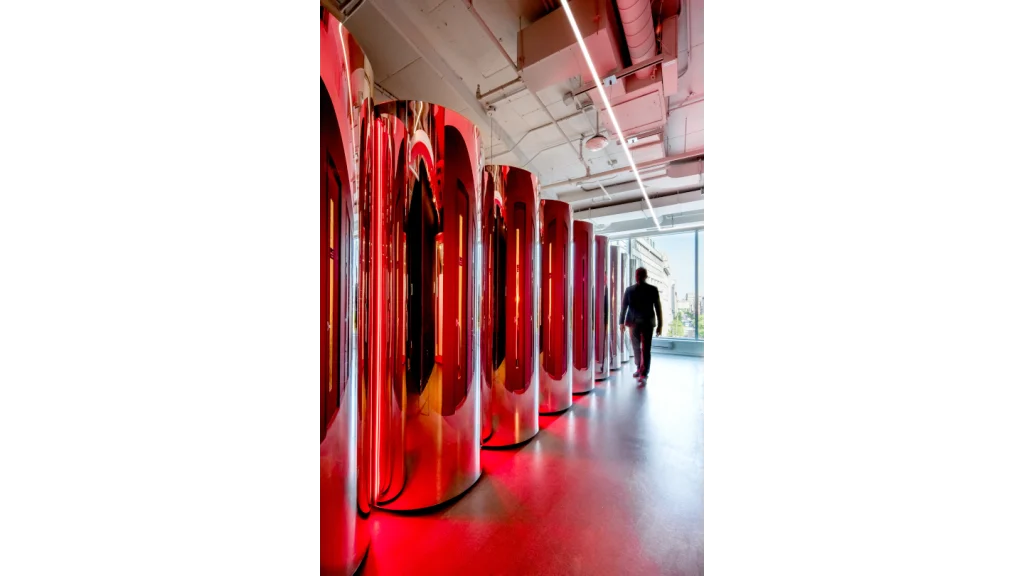
Post-pandemic, Canadian ad agency Cossette and its parent corporation Plus Company decided to reunite its Montreal workforce in a single downtown campus and attract remote workers back to the office.
As well as wanting to reflect the company’s creative credentials, the design focus was on UX (user experience) design. Workspaces are organised around the needs of the different creative teams, providing each with a workplace customised to working habits and creative practices. This entails a mix of open spaces, closed rooms and hybrid configurations. Previously siloed workplace pods were opened along the exterior wall to promote informal travel between the teams, and to provide greater access to views and light.
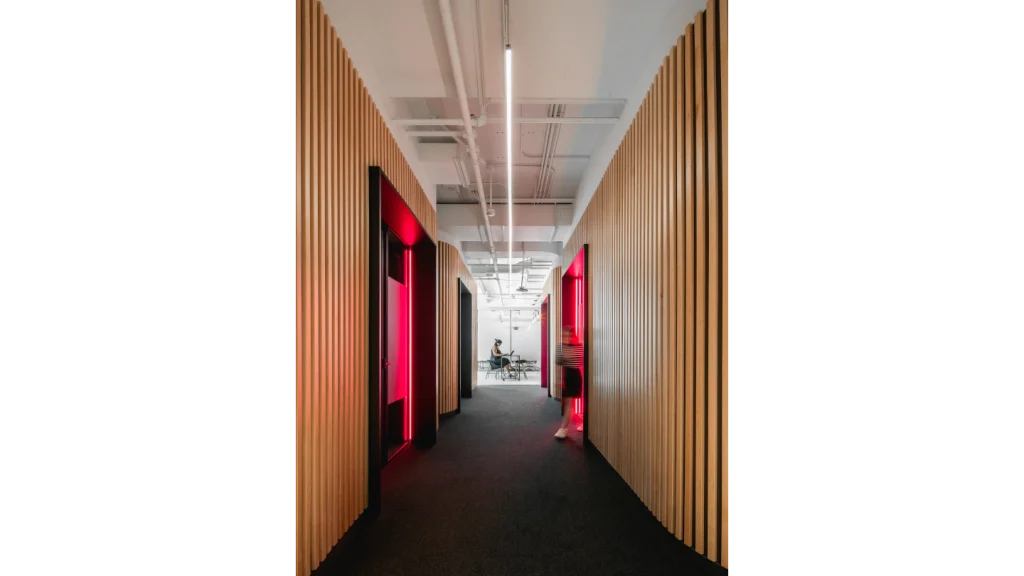
Beyond reflecting the business model in the layout, the brief to LAAB Architecture was to go beyond ‘hip design features and the ubiquitous foosball’ and to create a work environment that would avoid a ‘home-like’ look or ‘rehash the ubiquitous playful office tropes like swings’.
Creative energy is suggested more subtly by the linear red lighting details integrated into the highly reflective column elements, and also into the doorways of meeting rooms. In contrast with the largely monochromatic palette of the interior, it lends an edginess and vitality.
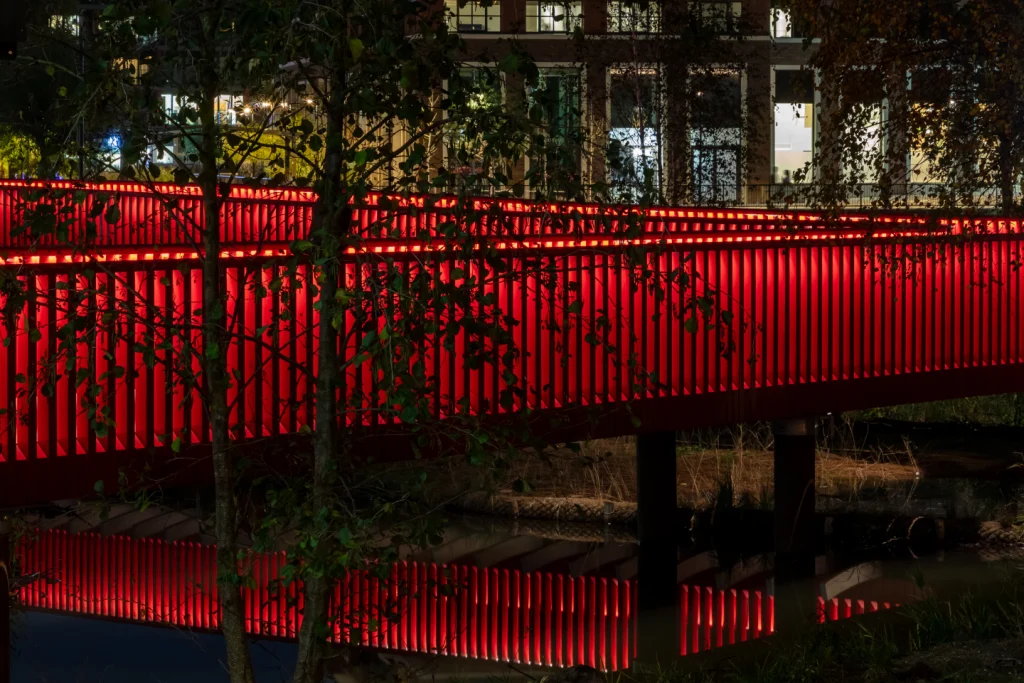
‘The result is a mesmerising space that almost inebriates its visitors with a rich visual stimulation and a tangible creative ambience,’ says Cossette.
BOARDWALK, SURREY DOCK, CANADA WATER, LONDON
SPEIRS MAJOR LIGHT ARCHITECTURE (SMLA)
The white light scheme for a new boardwalk at Surrey Dock orchestrates the light towards the warm end of the spectrum, complementing the red structure and also tuning the lit effect to the needs of local wildlife in the newly restored wetlands reserve. The docks area is a designated bat corridor. ‘The concept centres on seasonal control of intensity and colour, supporting the local bat population and the local biodiversity as a whole,’ says SMLA.
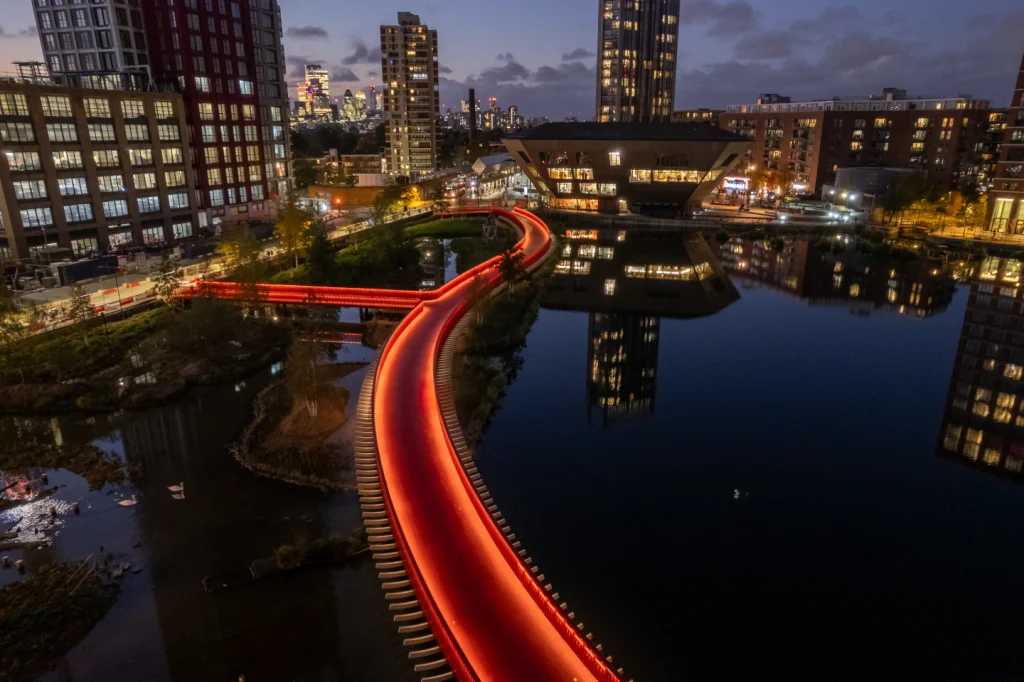
The new ribbon-like boardwalk designed by Asif Khan connects Canada Water Tube station with the emerging mixed-use development around the dock. It forms part of British Land’s Canada Water Development, which includes a lighting vision for the area created by SMLA in 2019.
After dark, warm white light integrated into the balustrade washes the boardwalk’s distinctive, red-stained timber, highlighting its form and colour. Soft, graduated light washes the deck, guard rails and exterior fins. It is carefully tuned and controlled so that pedestrians feel safe, while minimising brightness and spill light. It also enables them to better see and connect with the wetlands while limiting the impact on local ecology.
Working closely with the site ecologist, SMLA’s lighting concept includes seasonal timed adjustments in intensity and colour temperature to support the local bat population, and also consider the needs of local bird and insect populations.
‘We created a lighting control profile specifically designed to reflect the needs of the bat population,’ says associate partner Benz Roos. The lighting switches on half an hour after sunset and off half an hour before sunrise. When the bats hibernate in winter, the lighting comes on at a warm white 3000K in the evening for commuters and then shifts gradually over a few hours, becoming much warmer and dimmer as night falls.
‘During summer, the bats are active, and most commuters will be on the move during daylight hours,’ explains Roos. ‘With the sun setting so much later, when the lighting switches on, it does so at a minimal brightness in a very warm colour to minimise any impact on the bats.’
Emphasising the red end of the light spectrum while minimising ultraviolet light at the other end was as crucial as avoiding light spill. ‘During the mock-ups, we identified the need to add a louvre to the balustrade lighting to control the reflection of the light source in the water,’ says Roos. ‘We also chose light sources with an appropriate spectral profile, including little to no UV light.’


